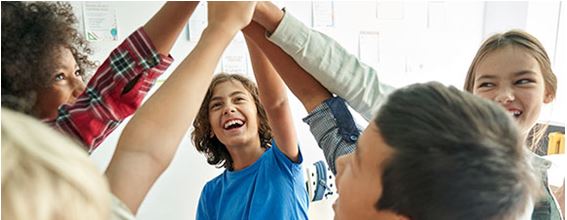The other day, as I was sitting down to write my next blog post, I found myself remembering one of my old teachers. Mrs. Terry (not her real name) wasn’t the trendiest of educators. She didn’t dazzle her students with fancy technology; pencil and paper worked just fine for her. She also didn’t possess that charisma which naturally draws students in, and the thought of her using TikTok or Instagram is positively laughable. However, I think many former students (myself included) would agree that Mrs. Terry was one of our most influential teachers, because she had a way of noticing things.
You see, Mrs. Terry had a gift. She could see what students were passionate about even if they couldn’t see it themselves. That class clown who loved being the center of attention? Mrs. Terry was the one who casually suggested he join the school play. That girl who always made little houses out of flashcards? She suddenly took up an interest in architecture after Mrs. Terry mentioned it during class.
As for me, Mrs. Terry was the one who realized that a shy daydreamer could become the school’s most voracious reader. If only someone loaned him a book that is…
Learning and Discovery
I think we, as adults, can sometimes forget how hard it is to be a kid. With all our current cares and responsibilities, the past takes on a golden hue. We start to think of childhood as a time when everything is fun and carefree. In reality, growing up is an awkward, uncomfortable process. Most of us spent years just trying to figure out who we were!
One way we can make these chaotic years easier is by encouraging student interests. When Mrs. Terry helped me discover my love for reading, she did more than provide me with a useful hobby. Reading strengthened my language and vocabulary skills, which, in turn, improved my abilities in writing. Reading and writing also helped foster my social-emotional learning. The stories I read allowed me to sort my emotions, gave me models for responsible decision-making, and taught me the value of self-awareness.
Best of all, reading and writing became a source of engagement for me. It allowed me to find my own voice and apply it to subjects I wasn’t nearly as passionate about. I can still remember how during one math lesson I was able to clearly articulate the Fibonacci sequence and the golden ratio because I was allowed to work them into a story!
Finding Direction
We never want students to define themselves by a singular quality, but encouraging student interests can build a foundation for other learning possibilities. We’re all motivated by tasks that interest us. We’ll happily spend hours researching, crafting, and revising work when we’re passionate about what we’re doing. By helping students discover what they love, we create opportunities for more complex work and time spent on tasks than they would normally ignore.
So, remember to keep an eye on your students. Ask yourself what hobbies they enjoy, and how these interests can be molded into productive learning experiences. When a topic connects to what students like to do, the potential for growth is limitless!

